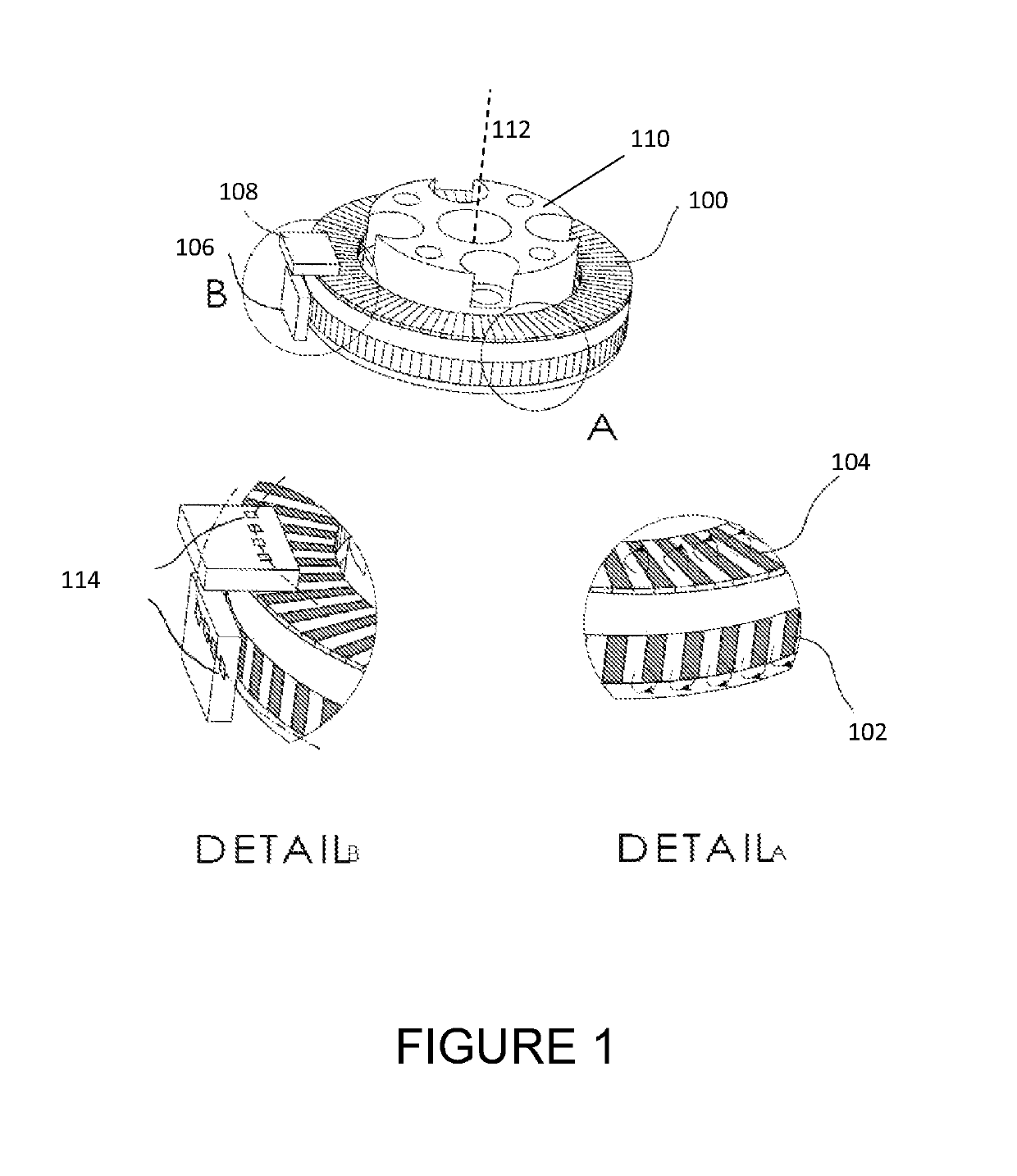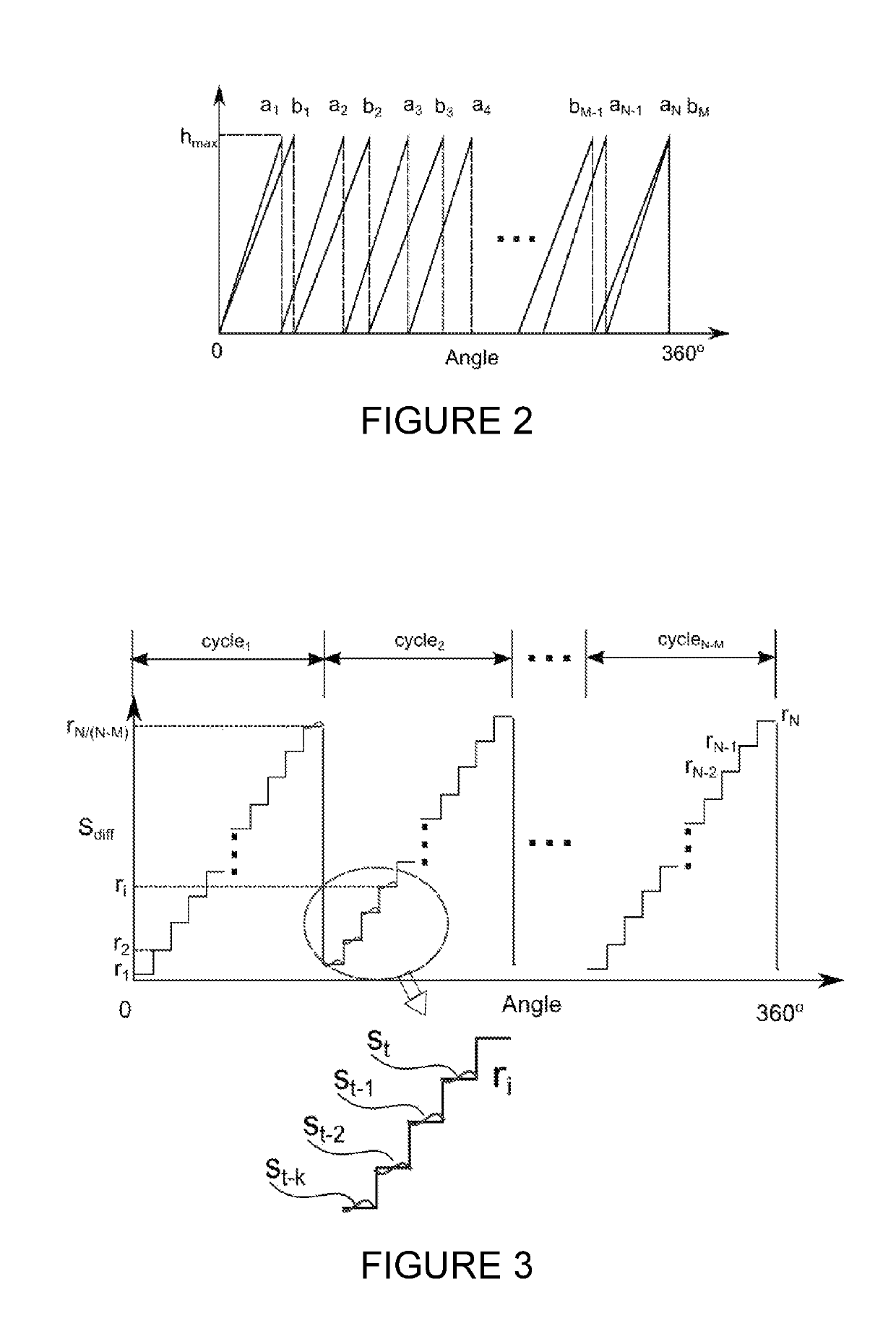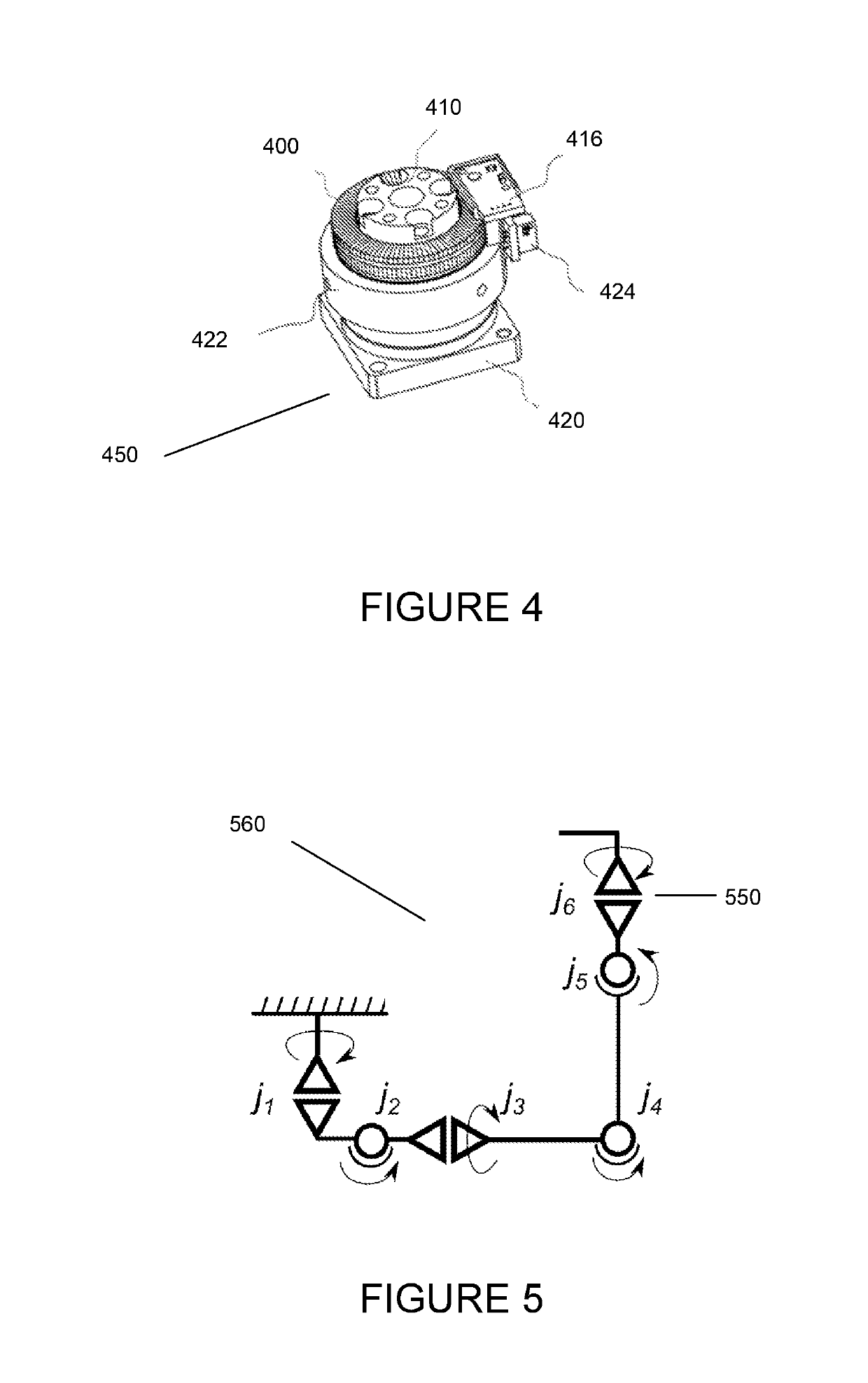Absolute rotary encoder
a rotary encoder and encoder technology, applied in the field of absolute rotary encoders, can solve the problems of incorrect position reading, high cost, and inability to meet the requirements of many applications of optical rotary encoders, and achieve the effect of reliable measurement and easy integration with other electronics
- Summary
- Abstract
- Description
- Claims
- Application Information
AI Technical Summary
Benefits of technology
Problems solved by technology
Method used
Image
Examples
Embodiment Construction
[0023]Referring to FIG. 1, there is shown an absolute rotary encoder according to a preferred embodiment of the present invention. Absolute position of the rotary encoder is measured around the rotational axis of the encoder 112. The absolute rotary encoder of this embodiment comprises: a magnetised element 100; first and second magnetic tracks 102 and 104; and first and second magnetic sensor arrangements 106 and 108. In this embodiment, the absolute rotary encoder also comprises a hollow shaft 110 which is arranged coaxially with the rotational axis of the encoder 112.
[0024]The magnetised element 100 in this embodiment is a circular magnetised ring 100, although alternative geometries may be used. The magnetised ring 100 is arranged coaxially around the rotational axis 112 and hollow shaft 110, such that the hollow shaft 110 protrudes through the hole at the centre of the magnetised ring 100. The magnetised ring 100 is imprinted with a first magnetic track 102 and a second magneti...
PUM
 Login to View More
Login to View More Abstract
Description
Claims
Application Information
 Login to View More
Login to View More - R&D
- Intellectual Property
- Life Sciences
- Materials
- Tech Scout
- Unparalleled Data Quality
- Higher Quality Content
- 60% Fewer Hallucinations
Browse by: Latest US Patents, China's latest patents, Technical Efficacy Thesaurus, Application Domain, Technology Topic, Popular Technical Reports.
© 2025 PatSnap. All rights reserved.Legal|Privacy policy|Modern Slavery Act Transparency Statement|Sitemap|About US| Contact US: help@patsnap.com



